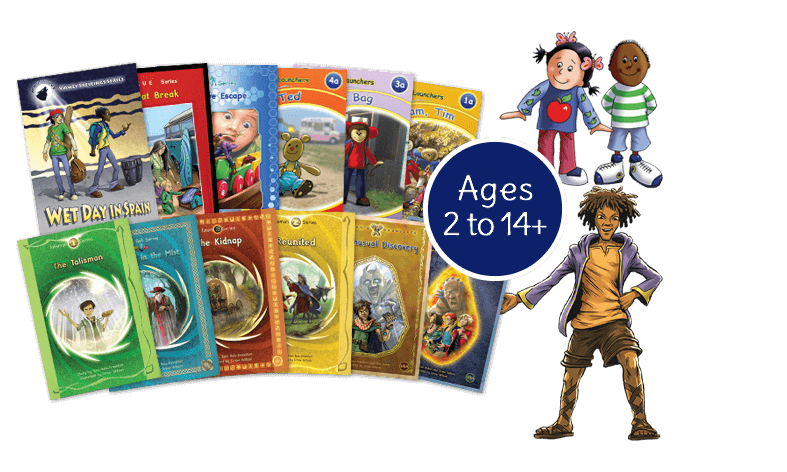What are decodable books and how do I use them?
Decodable books are controlled texts that beginner readers can read independently once they have been taught the spellings in the text. Children learning to read with phonics benefit from reading decodable texts because they allow them to practice what they have been taught and experience success. They also help children develop effective and successful strategies for reading: sounding out letters and blending them into words. Decodables books are fun decoding exercises.
Know your phonics program
- Decodable books complement any phonic program you are teaching. Understanding the phonic progression of that program is fundamental to using suitable decodable books alongside of it.
- It is not necessary for decodable books to progress in the same order—just for the pupil to have covered the spellings in the decodable book they are reading, so that they can read independently and successfully.
Prepare for reading
- Make sure that the children have learned the graphemes before they start reading. Get them to word-build, blend, segment, and practice reading through a variety of word reading and spelling activities and games.
- Reading a decodable book requires enough preparation so that it is a successful experience for the beginner/ struggling reader.
No ‘Messing with guessing’
- Encourage and model blending at all times. Ask the student to sound out the word and blend the sounds together into words. If there is a spelling they don’t know, provide it and get the student to blend through the word with this new information.
- No guessing! Encouraging the student to guess or use ‘mixed methods’ (picture, context, grammar) won’t help them read that word the next time they encounter it. We want children to be confident in decoding any word they encounter.
Read for meaning
- Always check the reader understands the words in the text. This is a great opportunity to develop vocabulary within context of a story. Reading is a combination of decoding and comprehension. Children need vocabulary in order to comprehend. The teacher can develop comprehension at different levels: factual, inferential, etc.
Practice and more practice
- Reading a number of decodable texts with the same spellings will help children remember and commit new words to long-term memory. Some reading schemes have a number of books at each level.
- You can also ask the students to re-read texts with expression or in pairs. This will develop reading fluency.
- Include phonic games and other reading activities such as ‘sound seeking’ in which the student reads a text and finds words with various spellings of a specific phoneme.
Whole class, group or 1:1
- Decodable texts can be read in whole class lessons as part of a phonics session, in groups, paired reading, and 1:1 for children who need extra support.
Age-appropriate decodables
- Older, struggling readers will need age-appropriate, decodable books in order to encourage and motivate them to re-engage in reading. Older students often suffer low self esteem due to previous failure, and offering them books which they consider ‘babyish’ reinforces this. Find age-appropriate decodables that those children will be happy to read.
To see our full range of decodable books visit www.phonicbooks.com


